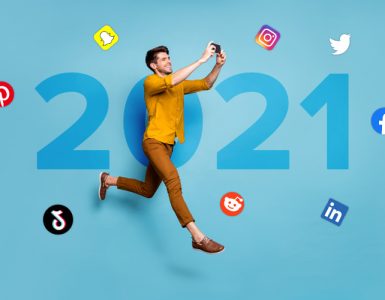There is no denying the fact that millennials are the most significant group of consumers, but there is another consumer segment, younger than the ever-popular millennials, whose number and retail influence is continuing to skyrocket. Generation Z is widely recognized as the most powerful consumer base that is projected to account for more than 40% of all customers by 2020.
Born after 1995, Generations-Z’ers are the new breed of customers that are more tech-savvy, latched on to social media and remember to do their diligent research before making a purchase decision. This powerful consumer base takes the lion’s share of the spending power that can help your business grow your revenue if you tweak your marketing strategy to cater to their needs.
Today, many brands are embracing innovative strategies to connect and market their brand to Generation Z. If you want to learn how to reach out and sell to this powerful new tech-centric consumer group, here are a few strategies your brand needs to follow.
1. Think Mobile First
Generation Z is the first group to have unlimited access to a smartphone throughout their teenage years. Generation Z is heavily reliant on mobile devices more than anyone else, including millennials. According to a study, members of Generation Z use smartphone most often to consume content. With this mobile-first attitude, brands should ensure that they are offering their prospective customers a seamless and incredible mobile-website experience. If you want to drive this powerful consumer base to your website, optimize your website for offering an out-of-the-box mobile experience.
2. Embrace Influencer Marketing
Amongst all consumer segments, Generation Zers are more prone to trusting influencers more than traditional celebrities. A study suggests that more than half of teenagers today prefer to see a brand advertise through social influencers instead of using run-of-the-mill advertising techniques, such as TV commercials, sponsored articles, banner ads and more.
Their engagement with YouTube creators clearly shows how much they value the opinions of micro-influencers as opposed to traditional celebrities. Brands interested in connecting with this powerful generation are advised to work with more influencers on social media to promote their brand. Brands that harness the power of influencer marketing can easily capture the interest of Gen-Z.
Let’s take Old Navy as an example which tapped online comedian Meghan Reinks to deck out for different occasions.
3. Highlight Real People in Your Marketing Campaigns
Gen Z expects authentic and entertaining interactions from brands. To earn their trust, marketers should highlight real people and their stories in their marketing campaigns. Today, showing the authentic side of your brand has now become an integral component of successful marketing. Highlight your values in what you do, refrain from making false claims about who you are, and let your users speak for you.
Have a look at Dove’s Real Beauty campaign. The campaign beautifully showcases the power of authenticity.
If you look at Abercrombie & Fitch, the brand focuses on putting real people in the limelight, instead of famous models, to flaunt their clothing range.
4. Leverage User Generated Content
Gen Zers are more savvy in choosing the content they aspire to watch, and they make sure to skip ads whenever possible. This is why embracing user-generated content is a wonderful way for brands to show potential buyers how other people are using their products and services. This type of content serves as social proof that can help brands quickly build credibility among prospects. Many brands such as BMW, GoPro, Sephora, Wayfair, Buffer and more are frequently using UGC on social media platforms to capture the interest of Gen-Zers.
Online furniture brand Wayfair allows its customers to flaunt their home setups featuring Wayfair products by using the hashtag #WayfairAtHome.
Starbucks harnesses the power of user-generated content by encouraging their fans to post shots of their coffees and incentivize them to participate and engage online by offering drool worthy giveaways.
5. Convey Your Brand Message Emotionally
Members of Generation Z rely on emotions instead of information to make brand decisions. Brands that leverage the power of emotional marketing can convey their brand’s identity, vision and create meaningful relationships that result in a loyal fanbase. Marketers need to curate content marketing campaigns to engage consumers on a more emotional level.
Vodafone has particularly launched a new mobile network for the youth, providing greater value on data, allowing users to access apps such as Snapchat and Messenger without cutting into their data plan.
Let’s consider Nike as an example:
Nike’s brand message “Just Do It” resonates across multiple cultures. In this video, the brand doesn’t mention Nike products but centers on the juxtaposition between a hero and his nemesis to create a sense of rivalry between the active you and the slothful you.
Have a look at this infographic that helps marketers understand how to sell their brands to Gen Z.

Conclusion
These are a few effective strategies to engage and win over the trust of well-informed, tech-savvy and a particularly cynical breed of consumers. If you are interested in marketing to this new digitally-savvy customer base, show your values, clearly convey your message, use real people for your marketing campaigns and leverage user-generated content to win the trust of Gen Z.





